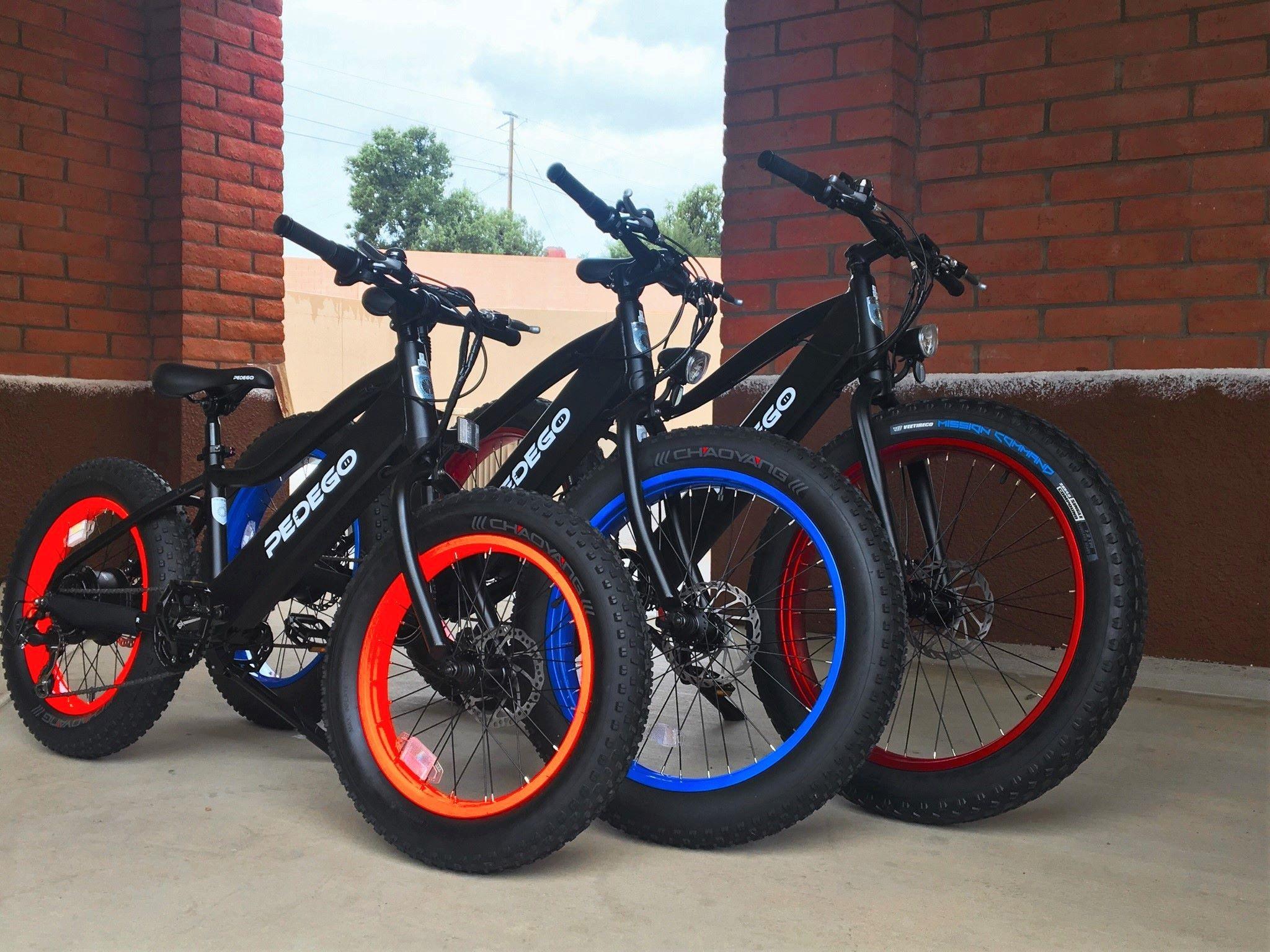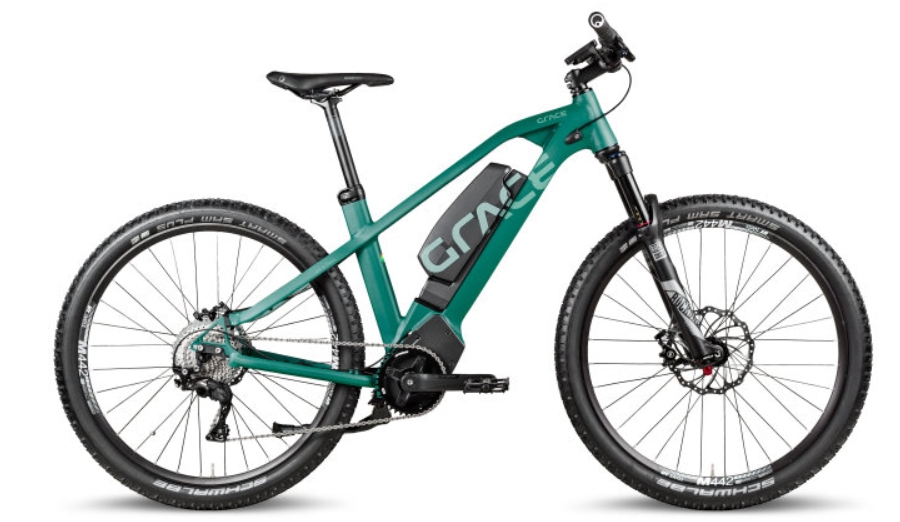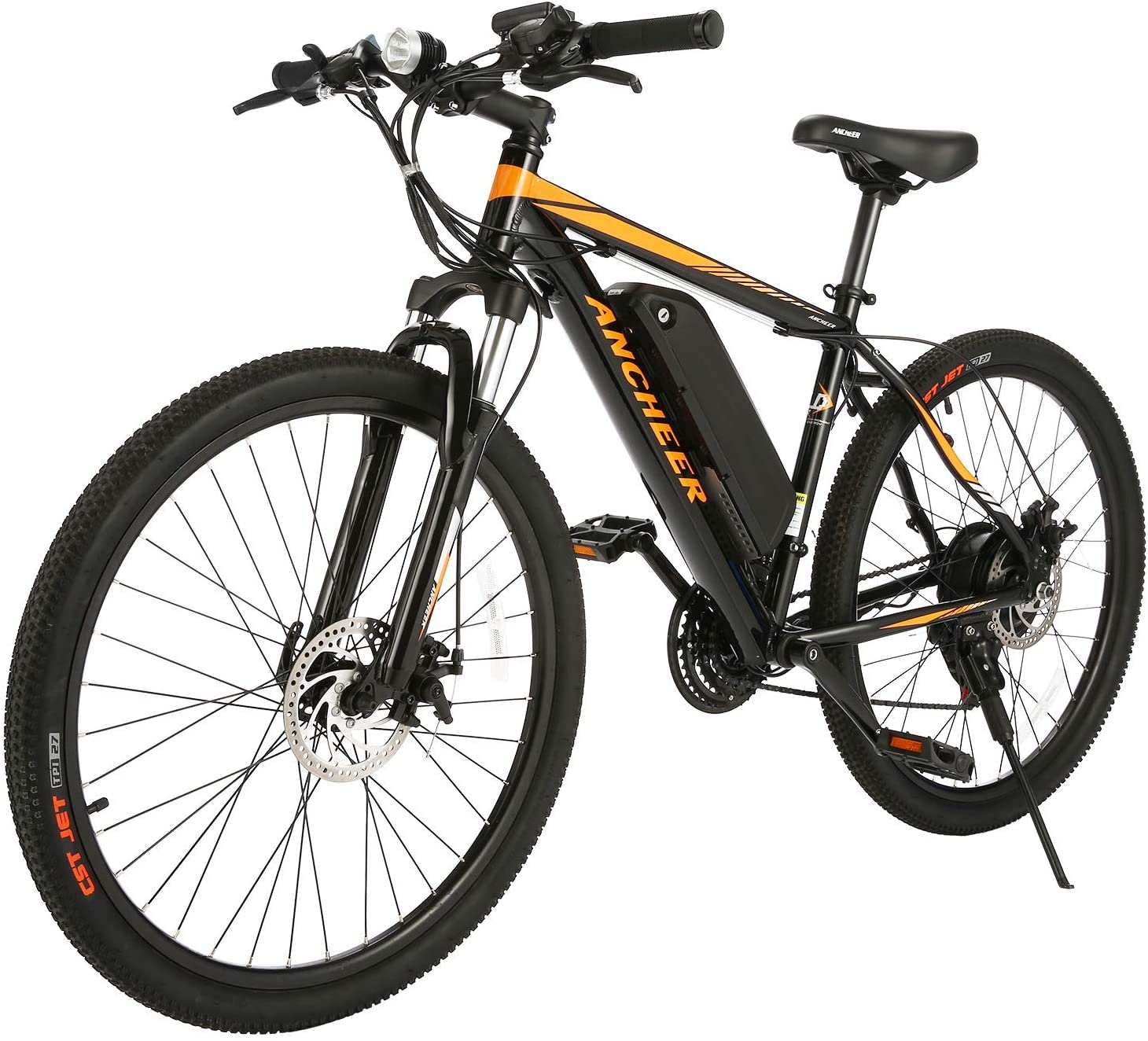Electric Bikes: A Synonym for Modern Urban Transportation
An electric bike, also known as an e-bike, is a two-wheeled vehicle that combines the traditional bicycle design with an integrated electric motor. This ingenious invention offers a perfect blend of eco-friendly, cost-effective, and efficient transportation, making it an increasingly popular choice among urban dwellers. The question “what is an electric bike?” is now more relevant than ever, as these vehicles gain traction and reshape the landscape of modern urban mobility.
Electric bikes are designed to assist riders during their pedaling efforts, providing a welcome boost that makes cycling more accessible and enjoyable for a wider audience. The motor, powered by a rechargeable battery, engages when the rider pedals, reducing the physical effort required to navigate hilly terrains or cover long distances. As a result, electric bikes have gained a reputation for being a practical and eco-friendly alternative to traditional bicycles and cars.
The growing popularity of electric bikes can be attributed to several factors. First, they offer a more sustainable transportation option, reducing the reliance on fossil fuels and contributing to a healthier environment. Second, e-bikes are generally more affordable than cars, both in terms of the initial investment and the ongoing maintenance costs. Lastly, electric bikes provide a convenient and efficient means of transportation, enabling riders to bypass traffic congestion and enjoy a smooth, effortless ride.
In summary, electric bikes represent a significant shift in the way we perceive urban transportation. By embracing this innovative technology, commuters can enjoy a more eco-friendly, cost-effective, and efficient mode of travel. The answer to “what is an electric bike?” encompasses much more than a simple definition; it signifies a promising future for urban mobility and a commitment to preserving our planet for generations to come.
How Electric Bikes Function: A Comprehensible Overview
At the heart of an electric bike lies a sophisticated system of components that work in harmony to deliver a seamless, enhanced cycling experience. Understanding the fundamental workings of an electric bike can help potential buyers make informed decisions and appreciate the value that these vehicles bring to the world of urban transportation.
The primary components of an electric bike include the battery, motor, and sensors. The rechargeable battery serves as the power source, storing energy that is later released to drive the motor. Modern electric bike batteries are typically made of lithium-ion, known for their high energy density, long lifespan, and relatively lightweight design. Battery capacity, measured in amp-hours (Ah), directly impacts the range of an electric bike, with higher capacity batteries enabling longer journeys between charges.
The motor is the driving force behind an electric bike, converting the battery’s stored energy into mechanical energy that propels the bike forward. Electric bike motors can be located in various positions, such as the hub of the front or rear wheel (hub motors) or near the pedals (mid-drive motors). Each motor type offers unique advantages, such as improved weight distribution, increased torque, or simpler installation. The motor’s power, measured in watts (W), influences the bike’s acceleration, hill-climbing ability, and top speed.
Sensors play a crucial role in electric bike functionality, detecting and responding to the rider’s input and the bike’s surroundings. The most common sensors include pedal-assist sensors, torque sensors, and speed sensors. Pedal-assist sensors determine when the rider is pedaling and engage the motor accordingly, providing a natural, intuitive riding experience. Torque sensors measure the force applied to the pedals, adjusting the motor’s assistance to match the rider’s effort. Speed sensors monitor the bike’s speed and help manage the motor’s output to maintain legal limits and ensure safe operation.
In summary, electric bikes utilize a sophisticated array of components to deliver a smooth, efficient, and enjoyable riding experience. By understanding the roles of the battery, motor, and sensors, prospective buyers can make informed decisions when selecting an electric bike that best suits their needs and preferences. The answer to “what is an electric bike?” extends beyond a simple definition, encompassing a complex interplay of technology and design that continues to evolve and improve over time.
Classifying Electric Bikes: Understanding the Categories
As the electric bike market continues to expand, it is essential for prospective buyers to familiarize themselves with the various classes and their associated features and regulations. Understanding these categories can help buyers make informed decisions and ensure compliance with local laws and regulations.
In the United States, electric bikes are primarily classified into three categories:
- Class 1: These electric bikes, also known as low-speed pedal-assisted electric bicycles, are equipped with a motor that provides assistance only when the rider is pedaling and ceases to operate when the bike reaches 20 mph.
- Class 2: Class 2 electric bikes, or throttle-assisted electric bicycles, are equipped with a motor that can be engaged with a throttle, providing power regardless of whether the rider is pedaling. Class 2 electric bikes also have a top speed limit of 20 mph.
- Class 3: Often referred to as speed pedal-assisted electric bicycles, Class 3 electric bikes offer motor assistance while the rider is pedaling, ceasing to operate at 28 mph. These electric bikes are typically equipped with a speedometer and may have additional requirements, such as helmet use, in some jurisdictions.
Each class of electric bike comes with its unique features and benefits, and understanding these differences can help buyers determine which option best suits their needs and preferences. Class 1 and Class 2 electric bikes are generally more accessible to a wider range of riders, while Class 3 electric bikes cater to those seeking higher speeds and performance. It is crucial for buyers to research local regulations and requirements, as these can vary significantly between jurisdictions and impact the ownership and operation of electric bikes.
In conclusion, familiarizing oneself with the different classes of electric bikes is an essential step in the purchasing process. By understanding the unique features and regulations associated with each category, buyers can make informed decisions and ensure compliance with local laws. The world of electric bikes is diverse and continually evolving, offering exciting opportunities for urban transportation and recreation alike.
Leading Electric Bike Brands: A Comparative Analysis
When exploring the electric bike market, buyers are often overwhelmed by the sheer number of available brands and models. To simplify the decision-making process, we have compiled a comparative analysis of some of the top-rated electric bike brands, highlighting their unique features, pricing, and consumer reviews.
Brand A
Brand A is renowned for its innovative designs and cutting-edge technology. Their electric bikes typically feature high-capacity batteries, powerful motors, and advanced sensor systems, providing riders with a smooth and exhilarating riding experience. Although Brand A electric bikes tend to be priced at the higher end of the market, their exceptional performance and durability make them a popular choice among serious riders.
Brand B
Brand B offers a diverse range of electric bikes catering to various budgets and preferences. While some models feature basic components, others boast advanced technologies and premium materials. Brand B electric bikes are known for their comfort, user-friendly interfaces, and affordability, making them an attractive option for budget-conscious buyers.
Brand C
Brand C focuses on producing electric bikes that blend style, performance, and functionality. Their designs often incorporate unique aesthetic elements, while their components are carefully selected to ensure reliable performance and longevity. While not as expensive as Brand A, Brand C electric bikes are typically priced higher than Brand B models, offering a balance between cost and value.
In conclusion, each electric bike brand offers a unique set of features, benefits, and pricing options. By carefully evaluating their options, buyers can find an electric bike that best suits their needs, preferences, and budget. As the electric bike market continues to grow and evolve, staying informed about the latest developments and trends is crucial for making well-informed purchasing decisions.
Maintaining Electric Bikes: Crucial Tips for Longevity
Electric bikes represent a significant investment, and ensuring their longevity and optimal performance requires proper maintenance. By following a few essential tips, electric bike owners can extend the lifespan of their prized possessions and enjoy a safer, more enjoyable riding experience.
Battery Care
The battery is one of the most critical components of an electric bike, and proper care is crucial to maintain its performance and lifespan. To ensure your battery remains in top condition, adhere to the following guidelines:
- Avoid fully depleting the battery before recharging.
- Store the battery in a cool, dry place when not in use, ideally with a partial charge.
- Use the manufacturer-recommended charger and charging practices.
Regular Inspections
Routine inspections can help identify potential issues before they escalate into significant problems. Schedule regular check-ups with a professional electric bike mechanic to ensure all components, including brakes, tires, and drivetrain, are in good working order.
Component Replacement
Over time, certain electric bike components may wear out or become damaged, necessitating replacement. Regularly inspect the brakes, tires, chain, and cassette for signs of wear, and replace them as needed to maintain optimal performance and safety.
In conclusion, proper maintenance is vital for the longevity and performance of electric bikes. By following these essential tips, electric bike owners can ensure their vehicles remain in top condition, providing them with years of safe, enjoyable, and eco-friendly transportation. Stay proactive in your maintenance efforts, and your electric bike will continue to serve you well for years to come.
Electric Bikes vs. Traditional Bicycles: A Balanced Perspective
As the popularity of electric bikes continues to grow, many potential buyers find themselves weighing the pros and cons of electric bikes versus traditional bicycles. Both options offer unique advantages and disadvantages, and understanding these factors can help readers make informed decisions based on their needs, preferences, and lifestyle.
Cost
Electric bikes typically have a higher upfront cost compared to traditional bicycles. However, the investment may pay off in the long run, as electric bikes can often cover greater distances and require less physical effort, making them a more practical option for daily commuting or long-distance rides. Additionally, advancements in technology and increased competition have led to a broader range of affordable electric bike options.
Convenience
Electric bikes offer several convenience-related benefits, such as motorized assistance for tackling hills or headwinds and extended range. These features can make electric bikes an attractive option for those who want to enjoy the benefits of cycling without the physical demands. Traditional bicycles, on the other hand, provide a more straightforward, lightweight, and maintenance-friendly experience, making them suitable for casual riders or those with limited storage space.
Health Benefits
While electric bikes can help riders conserve energy and reduce physical strain, they still offer numerous health benefits. Riding an electric bike can improve cardiovascular health, strengthen muscles, and boost mental well-being. However, traditional bicycles provide a more intense workout, making them a better choice for those seeking to maximize their fitness gains.
In conclusion, electric bikes and traditional bicycles each offer a unique set of advantages and disadvantages. By carefully considering factors such as cost, convenience, and health benefits, potential buyers can determine which option best aligns with their needs and preferences. Ultimately, both electric bikes and traditional bicycles serve as eco-friendly, cost-effective, and enjoyable alternatives to traditional motorized transportation.
Navigating Electric Bike Regulations: A Global Outlook
As electric bikes continue to gain popularity worldwide, understanding the various regulations that govern their use is essential for riders. These rules can vary significantly between countries and even within regions, making it crucial for electric bike owners to stay informed and comply with local laws to ensure safe and responsible riding practices.
Speed Limits
One of the primary factors that differentiate electric bike classes is their speed capabilities. Class 1 and Class 2 electric bikes, for example, are typically limited to a top speed of 20 mph, while Class 3 models can reach speeds of up to 28 mph. Some jurisdictions may impose additional speed restrictions or require electric bike riders to adhere to specific speed limits on bicycle paths or shared-use trails.
Age Restrictions
In some regions, electric bike use may be restricted based on the rider’s age. For instance, specific classes of electric bikes may only be operated by individuals aged 16 or older, while others may have no age restrictions at all. Riders should familiarize themselves with local laws to ensure they comply with any age-related requirements.
Helmet Requirements
Helmet laws for electric bike riders can also vary significantly between jurisdictions. In some areas, helmet use may be mandatory for all electric bike riders, regardless of age or class. In other regions, helmet requirements may only apply to specific classes or age groups. Always verify local regulations to determine the appropriate helmet usage for your situation.
In conclusion, understanding and adhering to electric bike regulations is crucial for riders to promote safe and responsible use. By familiarizing themselves with local laws regarding speed limits, age restrictions, and helmet requirements, electric bike owners can ensure a safe and enjoyable riding experience while contributing to the overall growth and acceptance of electric mobility.
The Future of Electric Bikes: Trends and Predictions
As electric bikes continue to evolve and gain widespread acceptance, several emerging trends and predictions are shaping the future of this dynamic industry. By staying informed about these developments, readers can better understand the potential of electric bikes and embrace the exciting possibilities they present for modern urban transportation.
Advancements in Technology
Technological advancements will undoubtedly play a significant role in the future of electric bikes. Innovations such as smart batteries, regenerative braking systems, and advanced sensor technologies will enhance performance, range, and energy efficiency. Furthermore, the integration of artificial intelligence and machine learning may lead to more intuitive and personalized riding experiences, further solidifying the position of electric bikes as a viable transportation alternative.
Design Innovations
Design innovations are also expected to shape the future of electric bikes. As manufacturers strive to create more aesthetically pleasing and functional designs, we can anticipate the development of sleeker, lighter, and more versatile electric bikes. Additionally, the growing popularity of cargo and folding electric bikes suggests that these niche markets will continue to expand, offering consumers even more options for their urban transportation needs.
Infrastructure Development
The growth of electric bike usage will necessitate the development of supporting infrastructure. Cities worldwide are beginning to invest in bike-friendly infrastructure, such as dedicated bike lanes, charging stations, and parking facilities. As this trend continues, electric bike owners can look forward to a more connected and convenient urban transportation network that caters to their needs.
In conclusion, the future of electric bikes is bright, with advancements in technology, design, and infrastructure paving the way for a more connected, sustainable, and enjoyable urban transportation experience. By staying informed about these trends and predictions, readers can better understand the potential of electric bikes and embrace the evolving world of electric mobility.







